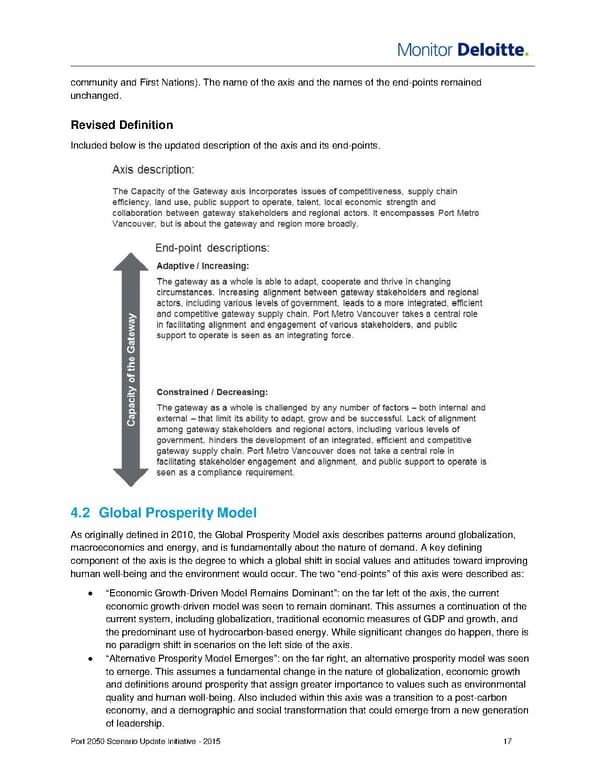community and First Nations). The name of the axis and the names of the end-points remained unchanged. Revised Definition Included below is the updated description of the axis and its end-points. 4.2 Global Prosperity Model As originally defined in 2010, the Global Prosperity Model axis describes patterns around globalization, macroeconomics and energy, and is fundamentally about the nature of demand. A key defining component of the axis is the degree to which a global shift in social values and attitudes toward improving human well-being and the environment would occur. The two “end-points” of this axis were described as: • “Economic Growth-Driven Model Remains Dominant”: on the far left of the axis, the current economic growth-driven model was seen to remain dominant. This assumes a continuation of the current system, including globalization, traditional economic measures of GDP and growth, and the predominant use of hydrocarbon-based energy. While significant changes do happen, there is no paradigm shift in scenarios on the left side of the axis. • “Alternative Prosperity Model Emerges”: on the far right, an alternative prosperity model was seen to emerge. This assumes a fundamental change in the nature of globalization, economic growth and definitions around prosperity that assign greater importance to values such as environmental quality and human well-being. Also included within this axis was a transition to a post-carbon economy, and a demographic and social transformation that could emerge from a new generation of leadership. Port 2050 Scenario Update Initiative - 2015 17
 Monitor Deloitte - Final Report Page 18 Page 20
Monitor Deloitte - Final Report Page 18 Page 20